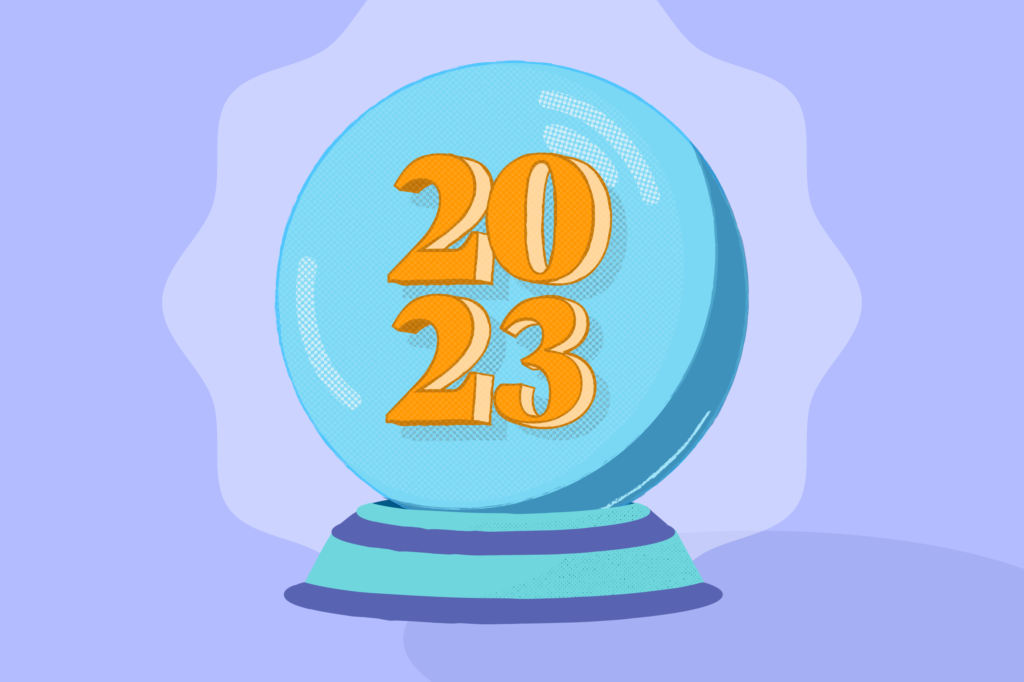Efficient contact centers see improved CSAT scores, happier agents, reduced overhead costs, and stronger customer retention and revenue.
But with so many moving parts—like workforce management, telephony tech, and agent workflows—it’s hard knowing exactly what to do to boost contact center efficiency and stand out in today’s marketplace.
As much as we’d like to say there’s a “simple solution,” the reality is: Improving contact center efficiency requires a holistic, top-down approach—measuring the right KPIs, using correct routing techniques, optimizing agent processes, and gathering and acting on feedback.
Measure the right KPIs.
Customer service agents are the lifeblood of your call center, but also where you can find most of a contact center’s operational efficiency pitfalls. If agents are not productive—be it from lack of training or bogged down operational processes—it could cost a large call center (typically with 200 or more agents) as much as $1.5 million a year.
The first step in improving contact center efficiency is establishing key performance indicators (KPIs) that give you insight into agent performance.
KPIs most helpful in measuring agent efficiency are:
- Calls Per Agent: How many calls an agent takes. This metric helps you see if call queues are balanced so that you can distribute the load evenly. When every agent handles an even (and sustainable) amount of calls, it reduces burnout and ensures that all your teams work efficiently.
- First Call Resolution: The ratio of customer calls resolved by an agent in a single interaction. High FCR rates mean fewer call transfers between departments and often higher customer satisfaction scores.
- Average Handle Time: How long your agents typically spend with each caller. Lower AHT could mean greater efficiency, but it might also indicate rushed calls with low FCR. Balanced AHT and FCR rates indicate efficiency.
- Average Hold Time: How long customers typically wait on hold before speaking with an agent. Lengthy hold times may indicate that more agent training is needed. Poorly trained agents burden the rest of the call center and can slow down the speed and timeliness of handling calls.
Once you have a benchmark of agent and department performance, you can identify performance gaps and take steps to improve efficiency. For example, if you see a low Call Per Agent metric you can work to monitor and tighten up agent idle time between calls or work to improve ACD call pacing. Similarly, contact centers with high Average Hold Times could lower call volumes by implementing a callback solution to keep callers out of hold queues or create more robust self-service options.
Optimize agent workflows.
Your agents are only as efficient as their workflow allows. To improve contact center efficiency, you need to optimize agent workflows and identify any lost time and productivity “leaks.”
Map out daily agent processes with clear goals and expectations.
Agents need to know how many calls they should take daily and their expected Average Handle Time. Ensure every agent is on the same page and follows the optimized process you establish. This helps identify process gaps that need attention, like agents complaining that finding customer information is too difficult.
Give agents an optimized knowledge database.
Simply having a knowledge database doesn’t mean it’s helpful. It needs to be easy to navigate and comprehensive so agents can quickly address callers’ questions and needs. Another way of improving efficiency is to create a “human knowledge base” by setting up your agents with a quick chat line they can use to bounce difficult questions off other, tenured agents.
Pro Tip: Use agent-assist technology to serve agents with crucial customer data and contextual info from your database in real-time—improving their AHT and time-to-resolution (TTR).
Automate gathering caller information and intent.
The more accurately you can collect a caller’s information—like who they are and why they’re calling—the quicker your agents can serve them with a personalized experience.
You can accomplish this in two ways:
First, you can use an IVR to collect caller information before connecting the call to an agent. When optimized, an IVR can serve as a deflection tool and a way to route and distribute calls to suitable agents and departments. Unfortunately, many callers view IVRs as more of an annoyance than a help, which is why we see more callers spamming the 0 key or saying “Talk to an agent” to skip the IVR entirely.
The second (and better) option allows customers to skip the IVR and schedule a call with customer service through a click-to-call solution like Mindful Scheduler on your website or app. This call scheduling tech uses form fields to gather caller information and lets them choose to receive a call from the next available agent or at a later time—effectively reducing call volume into your contact center, helping you better pace out calling and manage your workforce, and giving your agents the information they need to have a successful call.
One of our clients using Mindful Scheduler reported over $50 million saved in telephony costs when they started letting customers schedule their calls rather than go through their IVR or wait on hold.
Provide customers with great self-service options.
Rarely will your contact center be the first stop for customers with questions or issues. Today, customers are more likely to head online to browse your website, scan your FAQ page or knowledge database, or use a chatbot to get an answer on their own before they pick up the phone to call customer service.
Your self-service options—such as your website, chatbot, knowledge base, or mobile app—should be easily accessible and succinctly answer commonly asked questions or issues your customers face. This keeps low-priority calls out of your call queues while allowing your agents to spend more time on high-complexity (and likely higher-revenue) calls.
But while self-service solutions can be beneficial for both contact centers and customers, they can pose a significant risk to customer satisfaction. We’ve likely all had experiences where we’ve hit a digital dead end with a chatbot or IVR. Poorly programmed self-service options are frustrating because they signal the customer will have to start their entire support journey again in a different channel—repeating themselves to another agent or, worse, another bot.
The solution is to implement tech that lets self-service customers seamlessly flow between support channels without losing their context and having to start over in each one. For example, Mindful Handoff enables AI chatbots to offer the customer a call from the next available agent when it recognizes the customer is frustrated or when it senses it can’t answer the customer’s question. This integration helps customers quickly get the help they need without frustrating the caller—leading to longer, difficult calls with an agent—or overwhelming the contact center—since the calls skip the hold queue.
Reduce agent attrition.
The most expensive and efficiency-crushing scenario for contact centers is handling and replacing burnt-out agents. Agent turnover is costly and leads to an overwhelmed, demoralized, and understaffed workforce that struggles to meet SLAs and serve your customers.
On the flip side: Engaged, satisfied employees are less likely to churn from your contact center. And according to Gallup, engaged employees result in a 10% increase in customer retention and a 14% increase in productivity.
Ways to help reduce agent attrition include:
- Use tech that takes the stress off your agents. Caller frustration and venting puts the biggest strain on your agents. A call-scheduling and click-to-call solution can reduce self-service friction on your website or mobile app, and callback tech helps reduce friction of hold time phone calls—both leading to calmer, more amicable customer interactions and helping agents feel like they’re not staring down the barrel of an endless call queue.
- Recruit employees who are best for the job. Don’t just fill a seat because of high volume. Specifically, look for people with high empathy levels who will go above and beyond for your customers.
- Reward agents for good work. Incentives are a powerful way to motivate employees. Review your agent KPIs and metrics and reward employees who meet and surpass certain milestones like high FCR. Also use a Voice of Customer (VoC) solution to collect customer feedback and reward agents based on positive customer interactions.
- Develop agent skills. Focus training on things like confrontation, customer anger management, and empathy.
- Have your agents analyze metrics. When your agents analyze customer satisfaction surveys, net promoter scores, and customer effort scores, they feel more involved and part of the solution to increasing contact center operational efficiency.
Give your agents the support and confidence they need to do their job well, and you’ll reap the rewards.
Collect both customer and employee feedback.
You can’t improve contact center efficiency in a vacuum. You must regularly collect feedback—from your customers and your agents—to discover areas in your customer experience and contact center that you can improve.
Collect feedback to help your customers.
Customer feedback provides direct insight into the external performance of your contact center. When collecting feedback—whether through CSAT surveys, NPS, or CES—look for places where customers express the most frustration in their customer journey. These areas will likely revolve around slow resolution times, speaking with an agent more than once to resolve their issue, or general dissatisfaction with how the agent handled it. Then, analyze these results regularly to identify trends. These frustration hotspots are the first place you’ll need to address to help improve your contact center performance.
Collect feedback to help your employees.
Conduct ESAT (employee satisfaction) surveys to determine where the agents are most stressed. ESAT surveys work on the same principle as CSAT surveys—the main questions are “How are we doing?” and “How can we improve?” Other vital topics you want to know about your employees include:
- Is your workload reasonable?
- Do you feel you have flexibility in your schedule?
- Is your stress level too high, and if so, why?
- Are you excited when you come to work?
- Do you see yourself working here in a year?
You want to ensure your employees are engaged because unhappy employees will affect your productivity and your turnover rate, which can lead to inefficient call center operations.
Pro tip: Use a real-time, omnichannel survey tool like Mindful Feedback to gather data from your customers and agents efficiently. Best-in-class tools use AI and machine learning to flag negative keywords, register conversation sentiment, and alert CX managers when quick follow-up is needed. Mindful Feedback can also measure agent satisfaction, control stress levels at work, and keep your contact center operations running smoothly.
Summing up: Tackle contact center efficiency one step at a time.
As we said, increasing contact center efficiency isn’t an easy overnight solution. It’ll take a multi-department effort to ensure your KPIs are understood and measured, your tech stack is up to date, and your agents are well cared for.
But the good news is, you don’t have to do it alone! We’ve been helping enterprise-level contact centers improve efficiency, support their agents, and create winning customer experiences for nearly 30 years. We’d love to come alongside you and show you that contact center transformation is possible, and the benefits are well worth the effort.
Schedule a demo with our business team to learn more.
This article was originally published in August 2017 and has since been updated.





